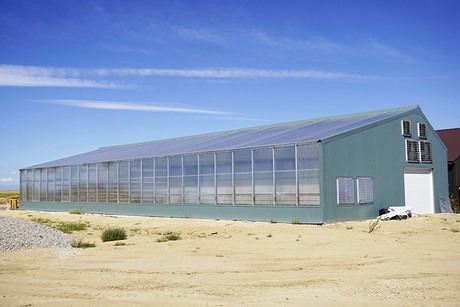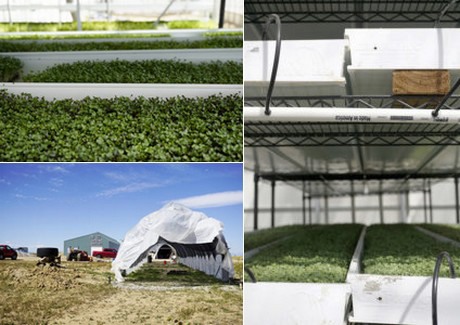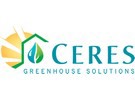Ceres paid a visit to their growers at Emerald Gardens Microgreens to see how their HighYield Commercial Greenhouse Kit was performing for them. Even though their Ceres greenhouse is not fully complete, Emerald Gardens is already seeing positive results from their sun-grown operation. They caught up with the growing team at EG to learn how their microgreens production is benefitting from their passive solar greenhouse.
Emerald Gardens Farm is located in Bennett, Colorado, just east of Denver International Airport. The farm was started as a way to improve people’s health through fresh produce, and today they are involved in many community-based agriculture projects. On top of their normal grocery store distribution, EG works with organizations in Denver to figure out how to give nutrient dense microgreens to communities that need them the most. They also sell their greens to Lucky’s Market and other local grocery stores along the front range of Colorado.

Currently, EG’s greenhouse is a sunlight only operation, meaning no supplemental lighting is used for propagation. They can function like this because the greenhouse is designed for light harvesting, meaning the reflectiveness of the insulated north wall allows the microgreens to capture sunlight from all angles. In fact, EG showed Ceres that the microgreens in the shade were growing just as well as the microgreens in direct sunlight.
Last year Emerald Gardens grew their microgreens indoor with lights. Since converting to a greenhouse operation, they have not only seen higher propagation rates, but the plants are more robust and nutritious. They did mention that in the Winter, when the days are short, they will be experimenting with supplemental lighting. Even so, the growers don’t need lighting for the majority of the year, helping them save on electricity costs.

The plants inside the greenhouse grow on a mat and water is flooded through the trays and drained on the other side of the greenhouse. There is a recirculating pump that is continually pumping water back up from the water reservoir through the microgreens system, using only 20-25 gallons of water a day – a minimal amount.
Another reason that Emerald Gardens chose to go with a solar powered greenhouse was because of their rural location. They can keep utility usage low with the use of solar power and Ceres' GAHT™ (ground to air heat transfer) system, which minimizes their heating needs. Right now they only use power for heating and cooling and exhaust fans (although they will need added electricity for lighting in the Winter). While this type of setup is considered “low-tech”, the fact that it yields more than what their indoor grow did speaks for itself.
For more information: Ceres Greenhouse Solutions
Ceres Greenhouse Solutions
4760 Walnut St., Suite 106
Boulder, Colorado 80301
303-495-5006
[email protected]
www.ceresgs.com
